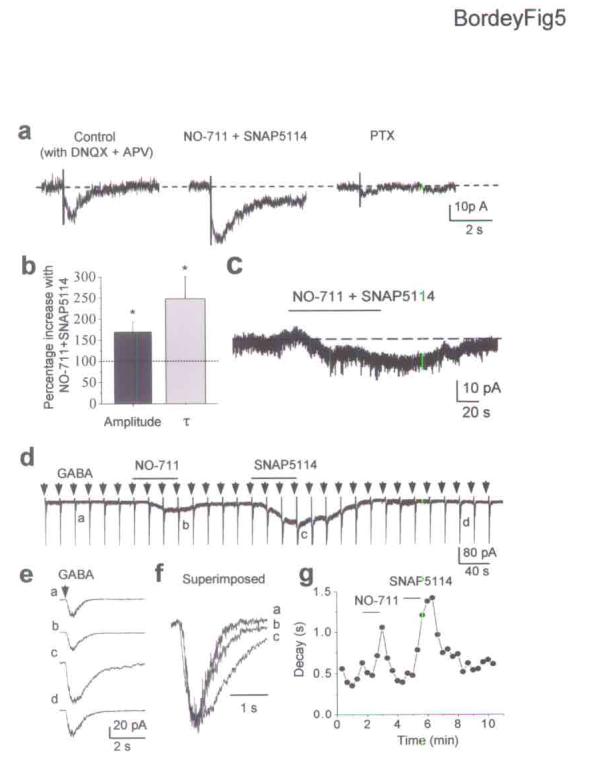Figure 5.

GABA uptake controls GABAAR activation in GFAP-expressing cells of the SVZ. (a) Bath application of GABA transporter antagonists, 50 μM NO-711 (for GAT1) and 50 μM SNAP5114 (for GAT3/4) enhances the amplitude and prolongs the decay time of PTX-sensitive currents evoked by tetanic stimulation in the SVZ. (b) Percentage increases of the evoked GABAA current amplitude and decay time constant in the presence of NO-711 and SNAP5114. Errors bars represent s.e.m. (c) NO-711 and SNAP5114 (50 μM each) reversibly induce an inward shift of the holding current in an GFAP-expressing cell. (d) Inward currents evoked by pressure applications of GABA (100 μM, 100 ms, every 20 s) before and during bath application of NO-711 (50 μM) and SNAP5114 (50 μM). Note that GABA responses were preceded by short 10 mV-depolarizations (transients on the records) to monitor the series and input resistance. In addition, NO-711 and SNAP5114 induced inward currents, suggesting that GABA transporter inhibition induced an increase in ambient GABA levels. (e) Average trace of three successive GABA responses at a higher time scale under control (a), in the presence of NO-711 (b) or SNAP5114 (c) and after washout (d). (f) Superimposed GABA responses (averaged) under control (a) and with NO-711 (b) or SNAP5114 (c). (g) Mono-exponential decay time constant of GABA response against the recording time.
